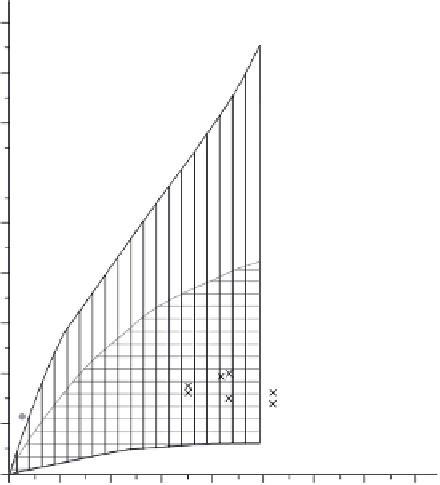Environmental Engineering Reference
In-Depth Information
BWR shadow corrosion
360
Siemens
1
GNF2
Westinghouse Atom
3
LK2
LK2+, LK3
320
280
240
200
160
120
80
40
0
0
10
0 0 0 0 0 0 0
MWd/kgU
4.56
Shadow corrosion data of various BWR fuel vendors' claddings.
(Source: Figure modifi ed according to Hoffmann and Manzel (1999);
Potts (2000); Zwicky
et al
. (2000). Copyright 2000 by the American
Nuclear Society, La Grange Park, Illinois.)
this illustrates the trend for saturation of the oxide thickness with fl uence or
burnup. In most cases, shadows have not caused fuel performance problems.
The upper curve in Fig. 4.50, is an exception for a specifi c cladding condition,
called Enhanced Spacer Shadow Corrosion (Zwicky
et al
., 2000 ).
A number of experiments have been conducted to elucidate the details of
the shadow corrosion mechanism. Combined with the commercial reactor
observations, these experiments reveal:
1 A variety of metals are observed to cause shadows on Zircaloy. These are:
(a)
Stainless steel (many)
(b)
Pt (Shimada
et al
., 2002; Johnson
et al
., 1974 )
(c)
Hf (Shimada
et al
., 2002)
(d)
Inconel X750, X718 (many)
(e)
Inconel 600 (Adamson
et al
., 2000 )
(f)
Welded regions on Zircaloy (Chen & Adamson, 1994 ; Shimada
et al
.,
2002).






















Search WWH ::

Custom Search